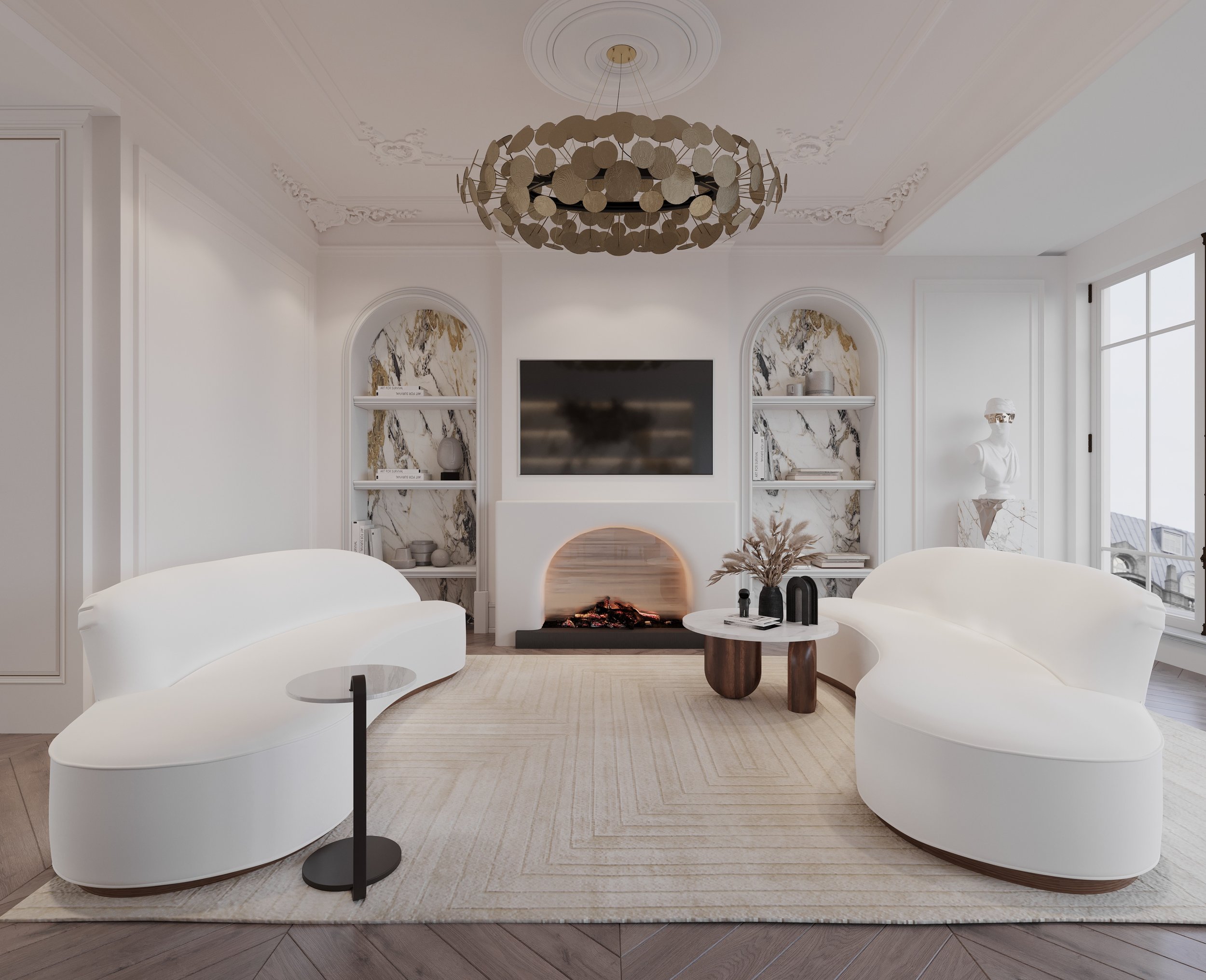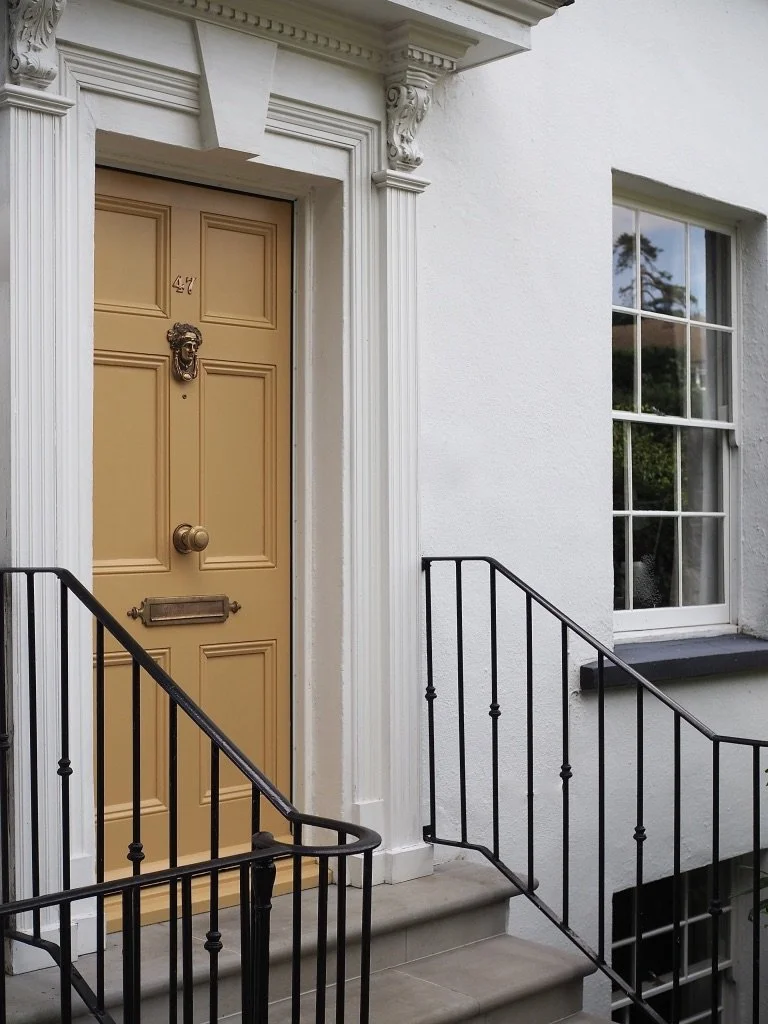How to Mix Different Styles and Textures to Create a Harmonious Living Space
Image Credit: Molly Mahon
Featured Partner Placement Post
In today's fast-paced world, interior design has evolved beyond rigid adherence to a single style. Instead, it has become a delightful blend of diverse elements, allowing us to express our individuality and create spaces that reflect our personalities. By skillfully combining various styles and textures, we can achieve a unique aesthetic that captivates the eye and evokes a sense of harmony and balance. Whether you're a design enthusiast or looking to revamp your living space, let’s unlock the secrets of mixing different styles and textures to create a truly harmonious and captivating interior.
Understanding Different Styles
In the world of interior design, there are many different styles with unique characteristics and visual elements; it's important to understand these styles to mix them well and create a harmonious living space. The modern style embraces simplicity, clean lines, and a minimalist approach, emphasising functionality and often incorporating glass, metal, and concrete.
Modern glass and metal balcony access doors. The Rhonda Dining Chairs are available via interiorr.com.
When mixing modern style with other aesthetics, focus on maintaining the sleek and uncluttered look while introducing elements from styles that complement the overall design. Rooted in classic design principles, the traditional style exudes elegance, refinement, and a sense of timelessness. It showcases rich textures, ornate details, and furniture with graceful curves.
Graceful and curvy sofas featured in this modern room design by Caffe Latte. Image credit: Caffe Latte.
To mix traditional elements with other styles, consider layering textures and patterns while maintaining a balance between the ornate and the contemporary. The industrial style draws inspiration from urban environments, featuring exposed brick walls, raw materials, and utilitarian fixtures.
Get the industrial look with this black brick wallpaper available via Beautiful Walls. Buy the Tom Dixon Beat Lamp from John Lewis & Partners. Image credit: Beautiful Walls.
Create a blend with other styles, introducing softer elements like cosy textiles and warm lighting to soften the industrial edge whilst retaining its rugged charm.
The layering of mixed textiles on the bed softens the industrial internal black crittall doors. Caro bed via Furniture And Choice.
The bohemian style is, in its nature, free-spirited and eclectic. It embraces vibrant colours, mix-and-match patterns, and an abundance of natural elements. When incorporating bohemian elements into your design, aim for a balanced combination of colours, patterns, and textures to create a visually captivating and cohesive space.
A bright and airy bohemian bedroom. Image credit: Dekoria GmbH
Within the diverse spectrum of interior design styles, antique furniture stands as a timeless addition that effortlessly transcends trends. By understanding the key characteristics and visual elements of different styles, you can blend these elements.
An antique-style lamp is complemented with a modern block-print lampshade by Molly Mahon. Image Credit: Molly Mahon
Choosing Complementary Textures
Textures are crucial in creating a harmonious living space, adding depth and visual interest. By selecting and combining complementary textures, you can enhance the overall aesthetic of your interior design.
A mix of striped textiles by Tori Murphy work harmionious together in this living room. Image credit: Tori Murphy.
Textures evoke different emotions and add a sensory dimension to the design. Smooth textures like polished wood or sleek glass create a contemporary atmosphere, while rough textures like exposed brick or natural stone introduce authenticity. Matte textures offer elegance, while glossy textures provide luxury. By understanding their impact, you can incorporate them carefully.
Balance contrasting and complementary elements.
Pair a smooth leather sofa with a chunky knit throw or mix velvet cushions with a linen chair.
Vary the scale of textures to avoid monotony, incorporating large-scale elements like a woven wall hanging and small-scale textures like a ribbed ceramic vase.
By selecting and blending textures you elevate the visual and sensory experience.
Wall hanging by Abode Living.
Establishing a Strong Color Palette
Creating a strong and cohesive colour palette is essential when mixing different styles and textures in interior design. Having a unified colour scheme for your living space is important to ensure the different styles and textures blend well together instead of creating a jarring contrast: it sets the mood, defines the overall aesthetic, and ties the elements together. When selecting colours, consider the desired atmosphere and the emotions you want to evoke in the room.
A strong colour palette makes a real impact. Capri Pink chalk paint via Annie Sloan.
Start by choosing a neutral base colour that serves as a foundation for the design. Neutral tones like whites, greys, and beiges create a versatile backdrop that allows other elements to shine. This neutral base provides a harmonious canvas to unite different styles and textures. To add visual interest and personality to your space, introduce pops of colour through accessories, accent pieces, or even a bold statement wall.
This earth red makes a real statement. Lady Bug Clay Paint from Earthborn Paints.
Colour considerations:
Consider complementary or analogous colour schemes that harmonise with the base colour. Place pops of colour thoughtfully to create focal points and balance within the room.
Consider colours that enhance and complement the warmth and character of your furniture.
Creating a cohesive colour scheme in your living space will help bring balance and harmony to the overall design. It helps ensure that various styles and textures blend well together. In the upcoming sections, we will explore techniques for layering furniture and decor, as well as incorporating textiles and accessories, to further enhance the overall aesthetic of your home.
Layering Furniture and Decor
One effective method for integrating different styles and textures into your interior design is layering furniture and decor, which involves strategically combining different pieces to create a visually captivating living space that is both balanced and aesthetically pleasing. When layering furniture from various styles, consider the scale, proportion, and placement of each piece. Begin by using larger furniture items as anchors, such as a sofa or dining table, and then add complementary pieces around them. Be creative by mixing and matching styles, materials, and textures to achieve a cohesive and harmonious look. Experiment with different materials to add depth and variety to your design. Incorporate a mix of wood, metal, glass, and fabrics.
A sleek coffee table paired with plush velevet armchairs. Image credit: Covet House.
For instance, pair a sleek glass coffee table with a plush velvet armchair or combine a rustic wooden dining table with modern acrylic chairs. The juxtaposition of materials adds visual interest and creates an eclectic yet harmonious ambience.
Antique furniture serves as statement pieces within the layered design. Use them as focal points to showcase their timeless beauty and charm. Consider placing an armoire in the corner of the room or a vintage vase as a centrepiece. The unique textures and intricate details of an antique can effortlessly draw attention.
Incorporating Textiles and Accessories
Textiles and accessories are the final touches that bring warmth, personality, and a sense of completion to your coordinated living space. By carefully selecting and incorporating these elements, you can elevate the overall aesthetic and create a truly inviting environment.
Incorperate rich textiles and accessories for warmth and personality. Image credit: Prestigious Textiles.
Choose textiles such as rugs, curtains, and throw pillows that complement the chosen furniture and textures. Soften the space with plush fabrics or add texture with woven or patterned materials - these textiles enhance comfort and also add visual interest and depth to the design.
Tactile boucle fabrics soften the metal and glass doors out into the garden. Image credit: Prestigious Textiles.
Accessories play a vital role in adding character and personal style to your living space. Incorporate artwork, lighting fixtures, plants, and decorative objects that reflect your taste and complement the overall design - accessories provide the finishing touches that tie the various elements together and create a cohesive and visually pleasing environment. By thoughtfully incorporating textiles and accessories, you can infuse your living space with warmth, texture, and personal flair, resulting in a balanced and inviting atmosphere. With a little creativity and a dash of inspiration, you can turn any space into a beautiful and harmonious sanctuary. So, what are you waiting for? It's time to unleash your inner designer, experiment with different styles, textures, and colours, and create a space that truly represents you. Whether you prefer a minimalist look or a more eclectic vibe, these tips will help you transform your home into a stylish and comfortable haven that you'll love coming back to every day.

















